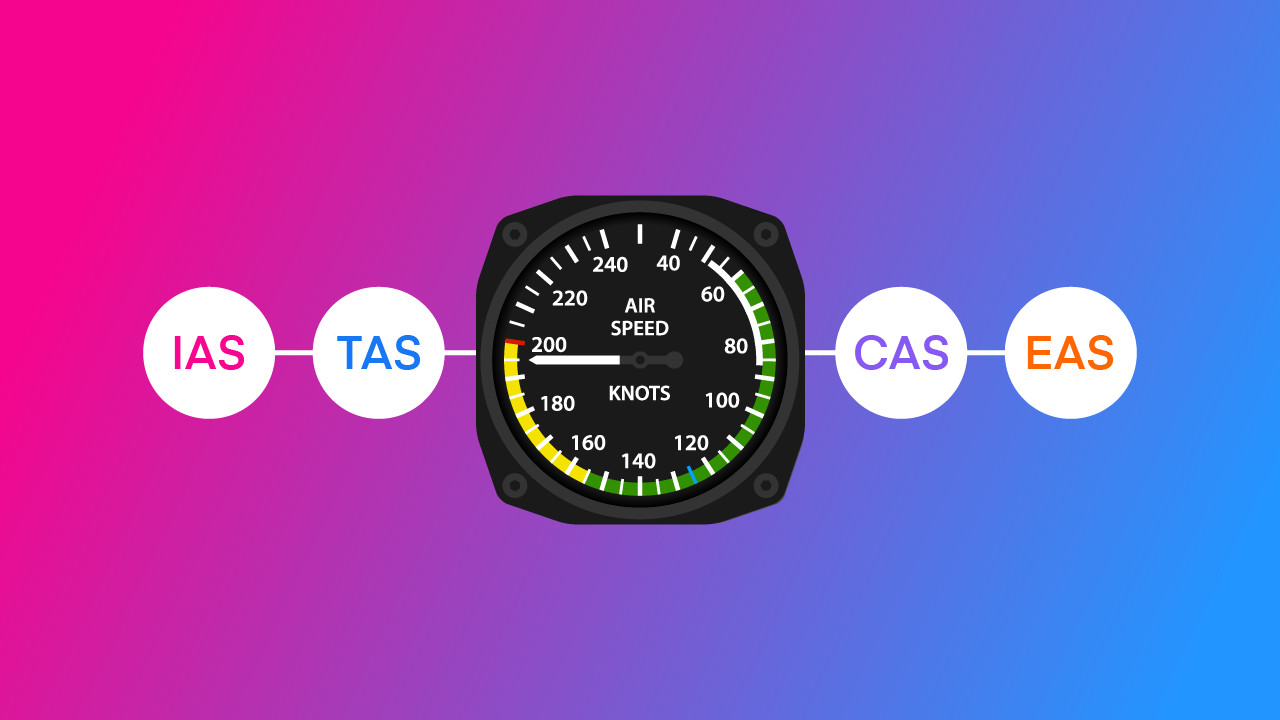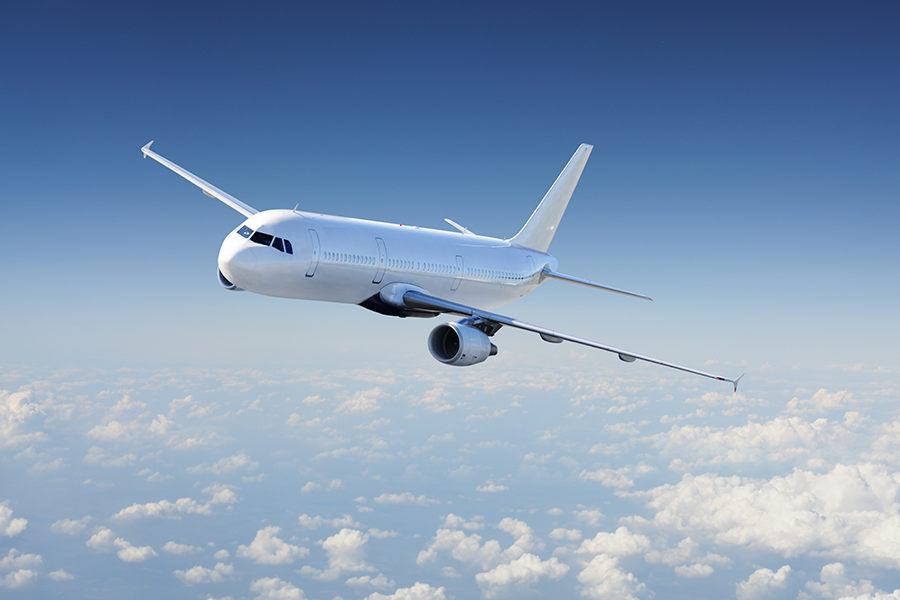- 1. What is the wind speed and direction at KINK?
- 2. What kind of weather is being reported at KJFK?
- 3. What is the Angle of Attack?
- 4. What altitude does the altimeter 1 read?
- 5. According to 91.151 what are the fuel requirements for a VFR night flight?
- 6. What is the runway length at Chesapeake Regional Airport (section 2)?
- 7. You are taking off on runway 21 and the wind is 180 degrees at 20 knots. What is your crosswind component?
- 8. You just passed your checkride and received your PPL. When will you need to do your first flight review to continue to act as PIC?
- 9. The angular difference between true north and magnetic north is
- 10. What minimum pilot certification is required in order to operate in Class B airspace?
- 11. You are flying through Class D airspace at 3,000’ AGL. What are the minimum visibility requirements?
- 12. To act as Pilot in Command carrying passengers, the pilot must have made three takeoffs and landings in the same class, category, and type (if required) in the preceding
- 13. The pilot of an aircraft that has been involved in an accident is required to file an NTSB report within how many days?
- 14. A 26 year old female is issued a Third-Class Medical Certificate on August 15th. How long will her medical allow her to exercise the privileges of her Private Pilot Certificate?
- 15. Which aircraft has the right of way over the other aircraft listed?
- 16. How often must your transponder be tested and inspected?
- 17. Filling the tanks after the last flight of the day is a good idea because…
- 18. In the Northern Hemisphere, a magnetic compass will normally show a turn toward the north if.
- 19. How should the flight controls be held while taxiing if there's a right quartering tailwind (R) ?
- 20. You fly from an area of high pressure to an area of low pressure without adjusting your altimeter. Your altimeter will read…
- 21. What are the 3 ingredients needed in order for a thunderstorm to develop?
- 22. What action should a pilot take before entering Class B airspace?
- 23. Over a congested area, you must remain ____ feet above the highest obstacle within a horizontal radius of 2,000 feet of the aircraft.
- 24. Vno is defined as…
- 25. When carrying passengers what obligation does the PIC have when it comes to the use of safety belts?
- 26. The four fundamentals involved in maneuvering an aircraft are…
- 27. The greatest vortex strength occurs when the generating aircraft is
- 28. During operations outside controlled airspace at altitude of more than 1,200 feet AGL, but less than 10,000 feet MSL, the minimum flight visibility for day flight is …
- 29. The pre-takeoff briefing of passengers about the use of seat belts for a flight is the responsibility of…
- 30. What action should be taken by the pilot when operating VFR in a Military Operations Area (MOA)?
- 31. This sign confirms your position on
- 32. The pilot loses communications while in the air. What squawk code should be selected?
- 33. How far will an aircraft travel in 7.5 minutes with a ground speed of 144 knots?
- 34. What does the red line on an airspeed indicator represent?
- 35. What is one purpose of wing flaps?
Practice for your FAA Private Pilot Written Exam below. These example questions will help you decide if you are prepared.
1. What is the wind speed and direction at KINK?

METAR KINK 121845Z 11012G18KT 15SM SKC 25/17 A3000
2. What kind of weather is being reported at KJFK?
SPECI KJFK 121853Z 18004KT 1/2SM FG R04/2200 OVC005 20/18 A3006
FG = Fog
Special report reads: at KFJK on the 12th day at 1853Z the wind was 180 degrees at 4 knots. There is a half SM of visibility. FG = Fog. On runway 4 the visibility is 2200 meters. The clouds are overcast at 500 feet AGL. Temperature is 20 degrees celsius and dew point is 18 degrees celsius and the altimeter setting is 30.06
3. What is the Angle of Attack?
The angle of attack is the angle between the chord line of an airfoil and the relative wind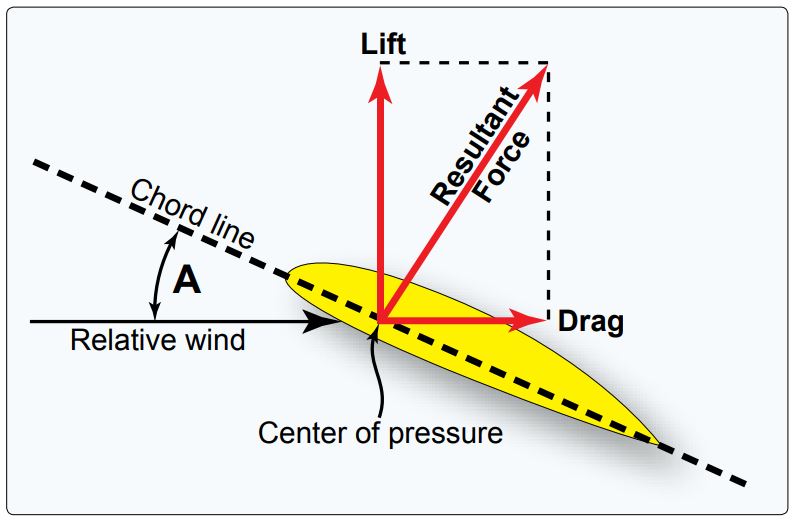
4. What altitude does the altimeter 1 read?
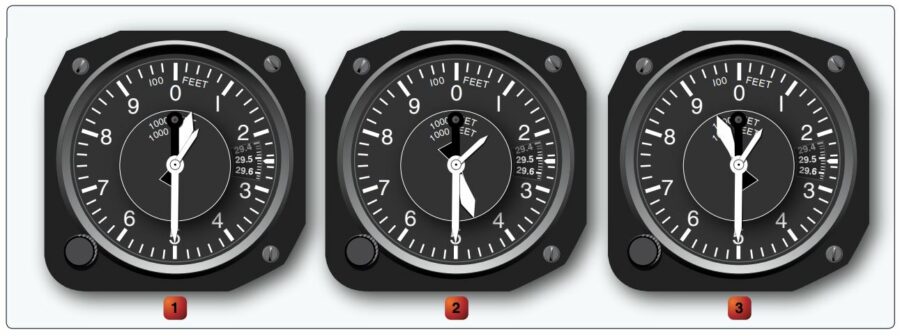
Altimeter one reads 10,500’ indicated altitude. The long arm pointed at the 5 shows us altitude in 500’s of feet. The short skinny hand pointed at the 1 shows us altitude in 10,000’s. Then, the short fat hand shows us altitude in 1,000’s.
5. According to 91.151 what are the fuel requirements for a VFR night flight?
14 CFR 91.151 tells us that no person may begin a flight in an airplane under VFR conditions at night unless there is enough fuel to fly to the first point of intended landing and for at least 45 minutes past that point, assuming normal cruise.
6. What is the runway length at Chesapeake Regional Airport (section 2)?
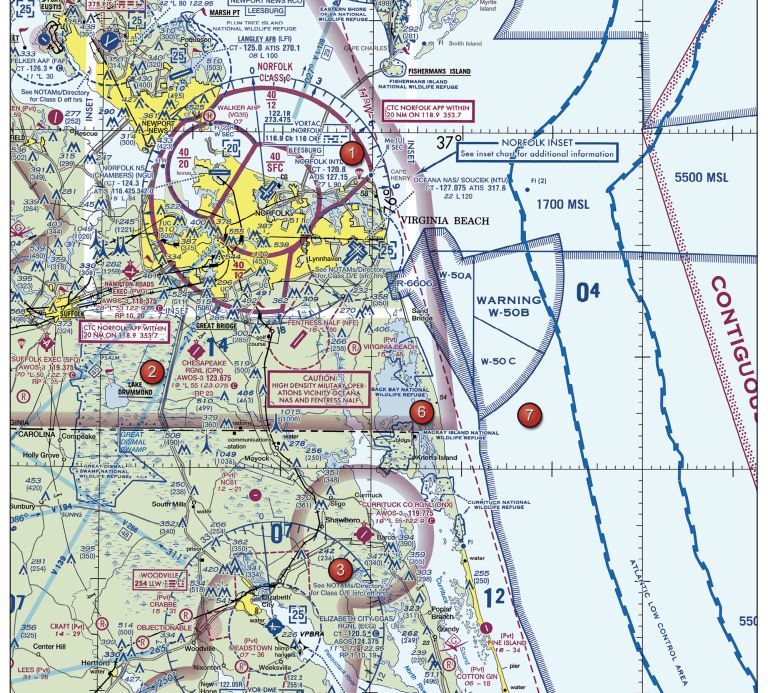
The runway length is depicted in the airport description in 100’s of feet. The “55” in the airport description tells us the runway at Chesapeake Airport is 5,500 feet.
7. You are taking off on runway 21 and the wind is 180 degrees at 20 knots. What is your crosswind component?
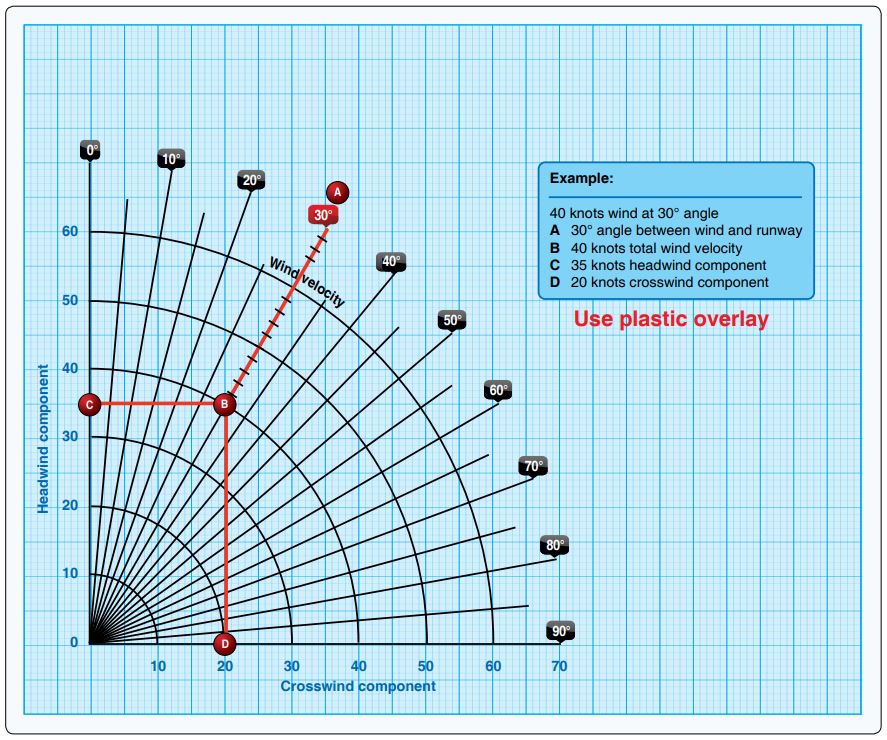
To calculate the crosswind component using the chart, you take the angular difference between the wind and the runway, in this case it is 30 degrees. So you see the red line drawn from 30 degrees at the top down to 20 knots. The 20 knots represents the wind speed. From the intersection of 30 degrees and 20 knots we can get our crosswind component of 10 knots at the bottom of the chart.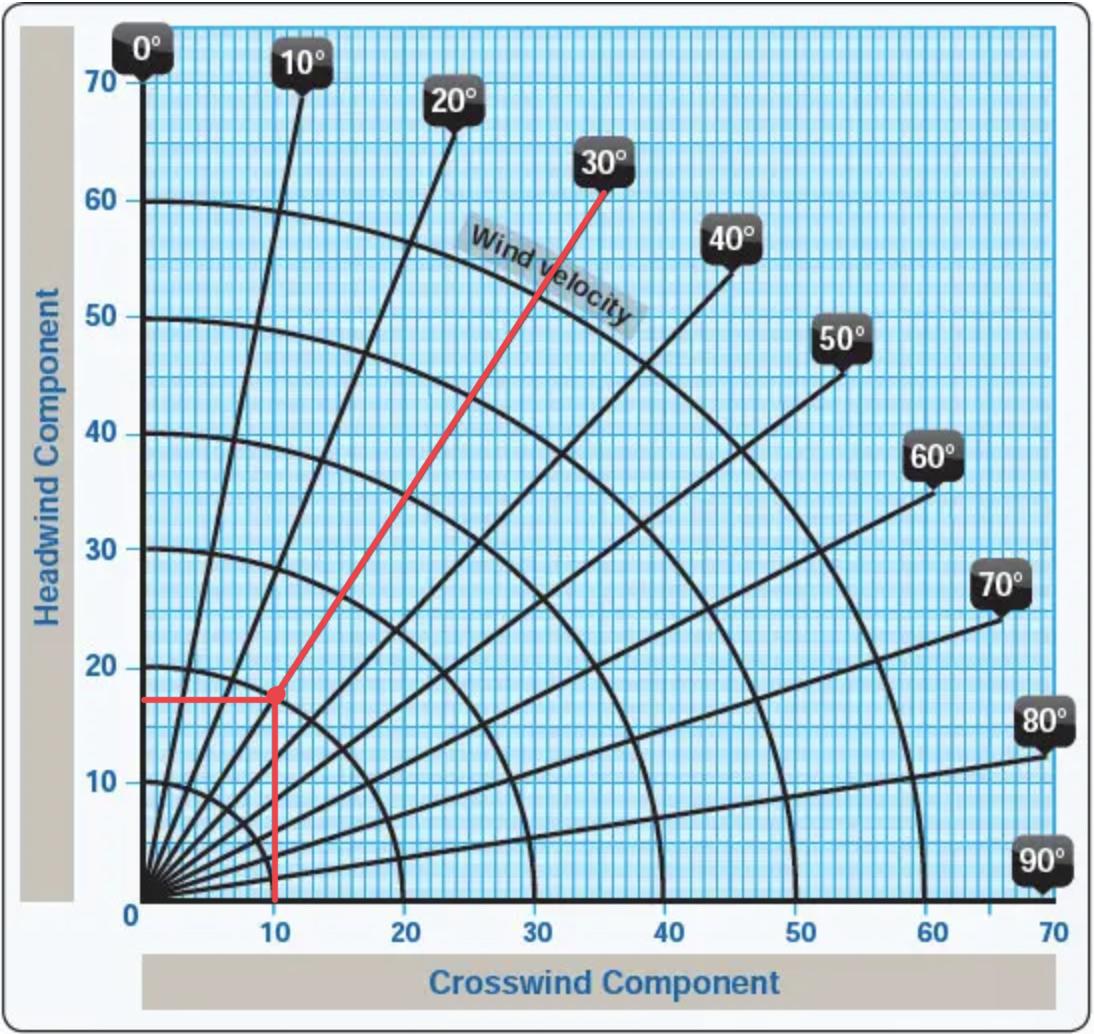
8. You just passed your checkride and received your PPL. When will you need to do your first flight review to continue to act as PIC?
According to part 61.56 to act as PIC you need to have completed a flight review within the last 24 calendar months.
9. The angular difference between true north and magnetic north is
Magnetic Variation is the angular difference between true and magnetic north. Magnetic Deviation is a compass error caused by local magnetic fields.
10. What minimum pilot certification is required in order to operate in Class B airspace?
According to 91.131 a pilot wanting to enter Class B airspace must have at least a private pilot certificate or a student pilot certificate with the appropriate endorsement.
11. You are flying through Class D airspace at 3,000’ AGL. What are the minimum visibility requirements?
According to part 91.155 the minimum visibility requirements in Class D is 3 SM.
12. To act as Pilot in Command carrying passengers, the pilot must have made three takeoffs and landings in the same class, category, and type (if required) in the preceding
According to Part 61.57 to act as PIC carrying passengers you must have made at least 3 takeoffs and 3 landings in the past 90 days.
13. The pilot of an aircraft that has been involved in an accident is required to file an NTSB report within how many days?
According to § 830.15 the NTSB requires the pilot of an aircraft involved in an accident to file an NTSB report within 10 days.
14. A 26 year old female is issued a Third-Class Medical Certificate on August 15th. How long will her medical allow her to exercise the privileges of her Private Pilot Certificate?
According to part 61.23: a third class medical certificate expires the “60th month after the month of the date of examination shown on the medical certificate”.
15. Which aircraft has the right of way over the other aircraft listed?
According to Part 91.113 a glider has right of way over an airship and an airplane.
16. How often must your transponder be tested and inspected?
According to part 91.413 the transponder needs to be inspected within the preceding 24 months of your flight.
17. Filling the tanks after the last flight of the day is a good idea because…
Filling the tanks at the end of the day is common practice so you are not leaving room for moisture condensation which could result in water at the bottom of your tanks.
18. In the Northern Hemisphere, a magnetic compass will normally show a turn toward the north if.
The acceleration/deceleration compass error states that if you accelerate while on a east or west heading, the weight in the compass will lag and the card will rotate towards the North.
19. How should the flight controls be held while taxiing if there's a right quartering tailwind (R) ?
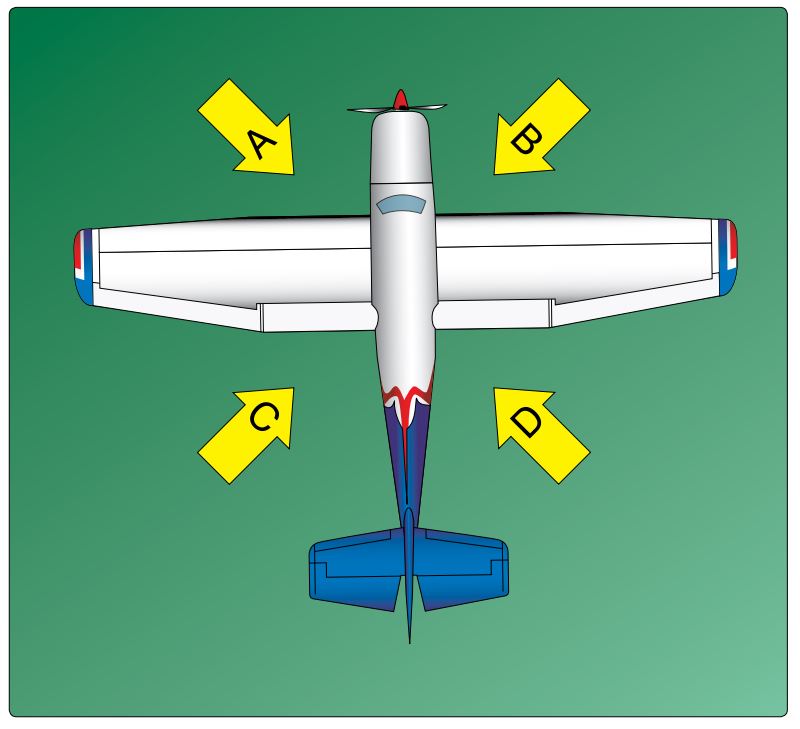
The whole point of aileron deflection while taxiing is to prevent the wind from picking up a wing or the tail so to remedy that during a right quartering tailwind, the pilot will need to put the right aileron down and the elevator down.
20. You fly from an area of high pressure to an area of low pressure without adjusting your altimeter. Your altimeter will read…
When flying from a high pressure area to a low pressure area your aircraft’s altitude will decrease slowly while the altimeter reading will remain constant, therefore your altimeter is indicating higher than your aircrafts actual altitude.
21. What are the 3 ingredients needed in order for a thunderstorm to develop?
The three ingredients to a thunderstorm are: moisture, a lifting mechanism, and instability. More detailed explanation on how thunderstorms develop in the FAA’s Pilot’s Handbook of Aeronautical Knowledge.
22. What action should a pilot take before entering Class B airspace?
According to part 91.131 no person may operate an aircraft in Class B airspace without receiving clearance from ATC first.
23. Over a congested area, you must remain ____ feet above the highest obstacle within a horizontal radius of 2,000 feet of the aircraft.
According to part 91.119, over a congested area an aircraft must remain 1,000 feet above the highest obstacle within a horizontal radius of 2,000 feet of the aircraft.
24. Vno is defined as…
The Vno speed is defined as the maximum structural cruise speed. Where the green arc ends and the yellow arc begins on the airspeed indicator
25. When carrying passengers what obligation does the PIC have when it comes to the use of safety belts?
According to part 91.107 the PIC has the obligation to brief the passengers on the use of safety belts and to fasten their safety belts during taxi, takeoff, and landing.
26. The four fundamentals involved in maneuvering an aircraft are…
The four fundamentals of maneuvering an aircraft are, as defined in the Airplane Flying Handbook, Straight-and-level flight, turns, climbs, and descents
27. The greatest vortex strength occurs when the generating aircraft is
According to AC 90-23G the greatest vortex strength occurs when the generating aircraft is heavy, clean, and slow since a “dirty” configured plane hastens wake decay.
28. During operations outside controlled airspace at altitude of more than 1,200 feet AGL, but less than 10,000 feet MSL, the minimum flight visibility for day flight is …
According to part 91.155 the minimum visibility requirements in uncontrolled airspace at an altitude of more than 1,200’ AGL and less than 10,000’ MSL is 1 SM.
29. The pre-takeoff briefing of passengers about the use of seat belts for a flight is the responsibility of…
According to part 91.107, the Pilot in Command is responsible for giving a pre-takeoff briefing of passengers about the use of seatbelts for a flight.
30. What action should be taken by the pilot when operating VFR in a Military Operations Area (MOA)?
VFR traffic can fly through an MOA without clearance but should exercise extreme caution when military activity is being conducted.
31. This sign confirms your position on
This black sign with a 22 written in yellow is a location sign and shows that you are on Runway 22. Typically taxiways are depicted with letters and not numbers. A sign that would direct you towards a runway is a yellow sign with the number of the runway and an arrow giving you direction written in black.
32. The pilot loses communications while in the air. What squawk code should be selected?
Squawk code for loss of communications is 7600. Squawk codes 7500 and 7700 are for hijacking and emergencies, respectively.
33. How far will an aircraft travel in 7.5 minutes with a ground speed of 144 knots?
144/60 = 2.4
2.4 * 7.5 = 18
34. What does the red line on an airspeed indicator represent?
Maneuvering speed is not depicted on the airspeed indicator as it changes with the weight of the aircraft. The red line on the top of the airspeed indicator indicates the never exceed speed. The maximum structural cruising speed is the top of the green arc on the airspeed indicator.
35. What is one purpose of wing flaps?
One purpose of wing flaps is to enable the pilot to make steeper approaches to a landing without increasing the airspeed.
Trim is what relieves pilots of maintaining continuous pressure on the controls. Flaps do not decrease the wing area.


